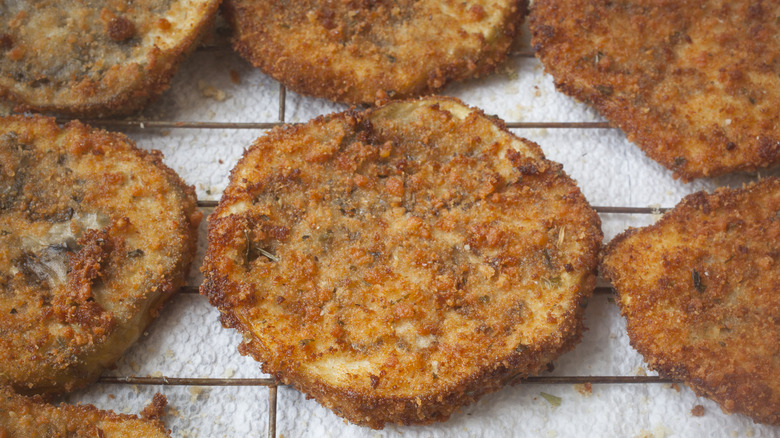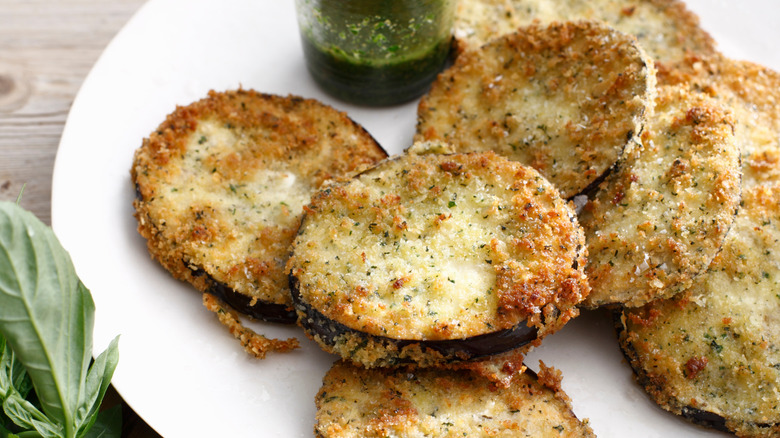Patience Is The Key To Avoiding Soggy Fried Eggplant
When we're in peak eggplant season (although eggplant is luckily a vegetable available typically all year long), all the eggplant recipes come out to play. Eggplant rollatini? Yes, please. Using eggplant as an ingredient in lasagna? Absolutely. Making eggplant parm with Ina Garten's secret technique on repeat all year? Sign us up.
While eggplant is a versatile veggie, there's one mistake you might be making if you're frying it: not drawing out moisture. Since eggplant is made of 80–90% water, forgetting to release some of that moisture can lead to mushy results — and nobody wants to eat soggy fried eggplant.
To prepare your veggie, all you have to do is peel and slice it — and then sprinkle both sides with kosher salt. Let the eggplant rest for up to an hour (either in a bowl or on a baking sheet lined with paper towels), rinse off any lingering salt, and then pat it dry before proceeding with your recipe. You'll now have the perfect specimen for dredging and frying to crispy perfection — all thanks to a little patience.
Other tips for frying eggplant
Your oil temperature is another crucial part of making the perfect fried eggplant. Keep the oil at about 350 degrees Fahrenheit to get a crispy outside and a perfectly cooked inside.
The type of fat you use also matters when frying. Opt for high-heat oils with a higher smoke point (aka the temperature at which an oil breaks down and begins smoking) and a neutral flavor. Two of your best options are canola oil or vegetable oil. Both of these oils have a neutral flavor, so they won't overpower the delicate taste of eggplant.
Additionally, they each have a smoke point that ranges between 400 to 450 degrees Fahrenheit respectively. If you only have unrefined olive oil on hand, this can also work. It has a lower smoke point at 375 degrees, but it works for pan-frying thin slices of meat or veggies. Keep in mind that olive oil has a specific taste that will transfer to the dish you're making — although many might not mind that.
Lastly, frying eggplant often calls for a shallow fry (also called pan frying). This is because eggplant is a sponge that absorbs liquids, so deep frying introduces too much oil to the thirsty vegetable. Shallow frying is perfect for producing a nice crust without all the additional oil (and thus a soggy end product) — just make sure to not overcrowd the pan, which can lead to the oil temperature dropping and creating mushy, greasy results.


